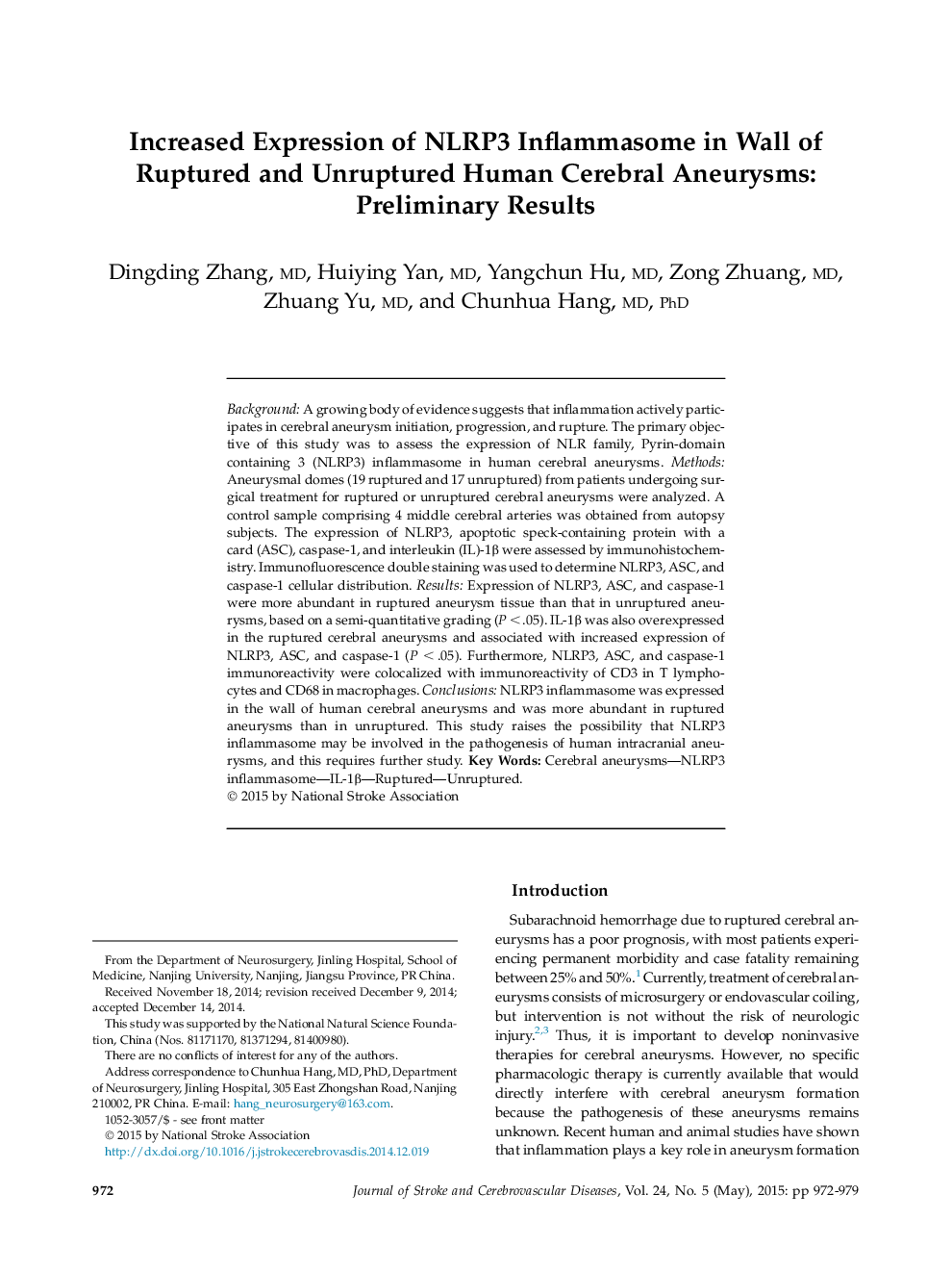| Article ID | Journal | Published Year | Pages | File Type |
|---|---|---|---|---|
| 2703898 | Journal of Stroke and Cerebrovascular Diseases | 2015 | 8 Pages |
BackgroundA growing body of evidence suggests that inflammation actively participates in cerebral aneurysm initiation, progression, and rupture. The primary objective of this study was to assess the expression of NLR family, Pyrin-domain containing 3 (NLRP3) inflammasome in human cerebral aneurysms.MethodsAneurysmal domes (19 ruptured and 17 unruptured) from patients undergoing surgical treatment for ruptured or unruptured cerebral aneurysms were analyzed. A control sample comprising 4 middle cerebral arteries was obtained from autopsy subjects. The expression of NLRP3, apoptotic speck-containing protein with a card (ASC), caspase-1, and interleukin (IL)-1β were assessed by immunohistochemistry. Immunofluorescence double staining was used to determine NLRP3, ASC, and caspase-1 cellular distribution.ResultsExpression of NLRP3, ASC, and caspase-1 were more abundant in ruptured aneurysm tissue than that in unruptured aneurysms, based on a semi-quantitative grading (P < .05). IL-1β was also overexpressed in the ruptured cerebral aneurysms and associated with increased expression of NLRP3, ASC, and caspase-1 (P < .05). Furthermore, NLRP3, ASC, and caspase-1 immunoreactivity were colocalized with immunoreactivity of CD3 in T lymphocytes and CD68 in macrophages.ConclusionsNLRP3 inflammasome was expressed in the wall of human cerebral aneurysms and was more abundant in ruptured aneurysms than in unruptured. This study raises the possibility that NLRP3 inflammasome may be involved in the pathogenesis of human intracranial aneurysms, and this requires further study.
